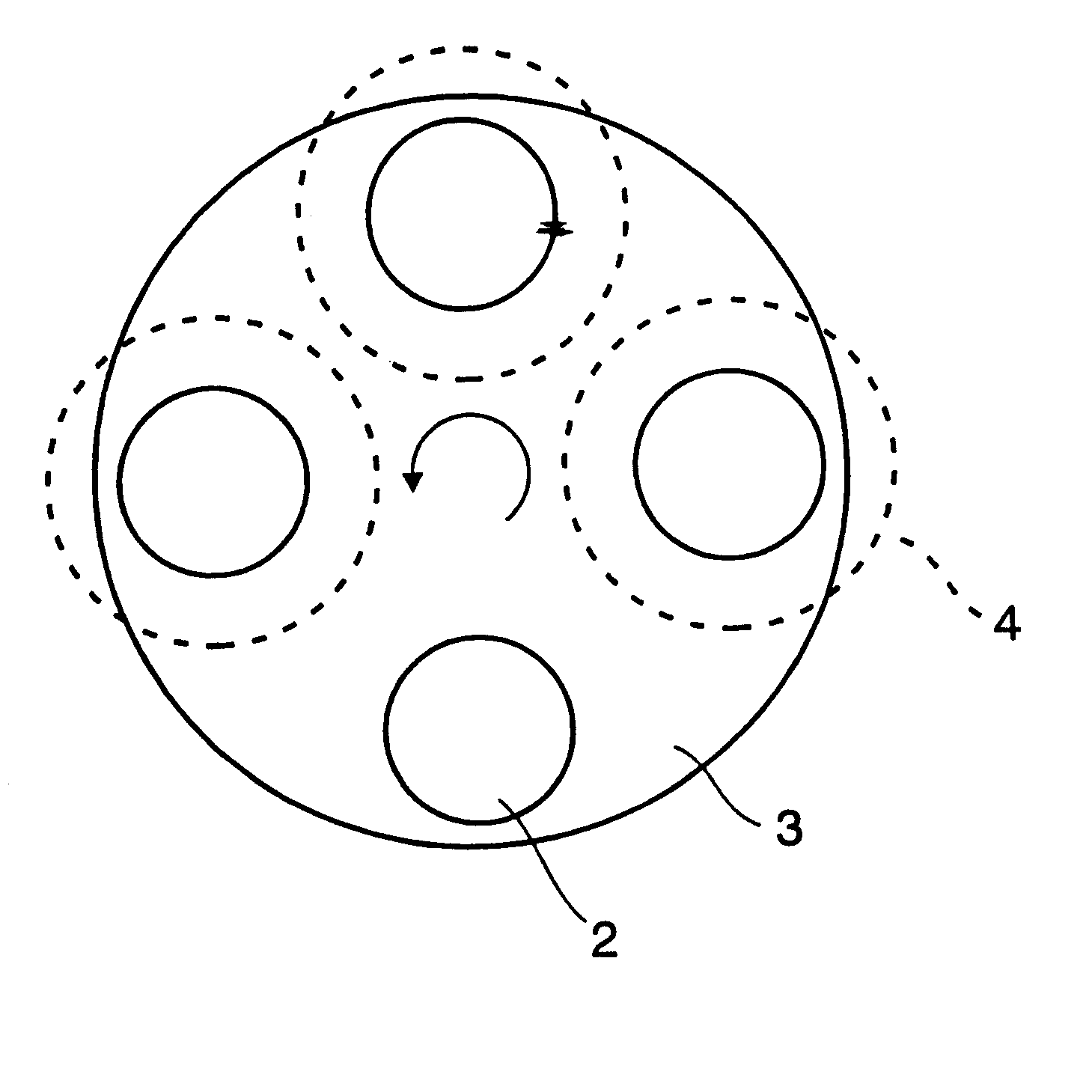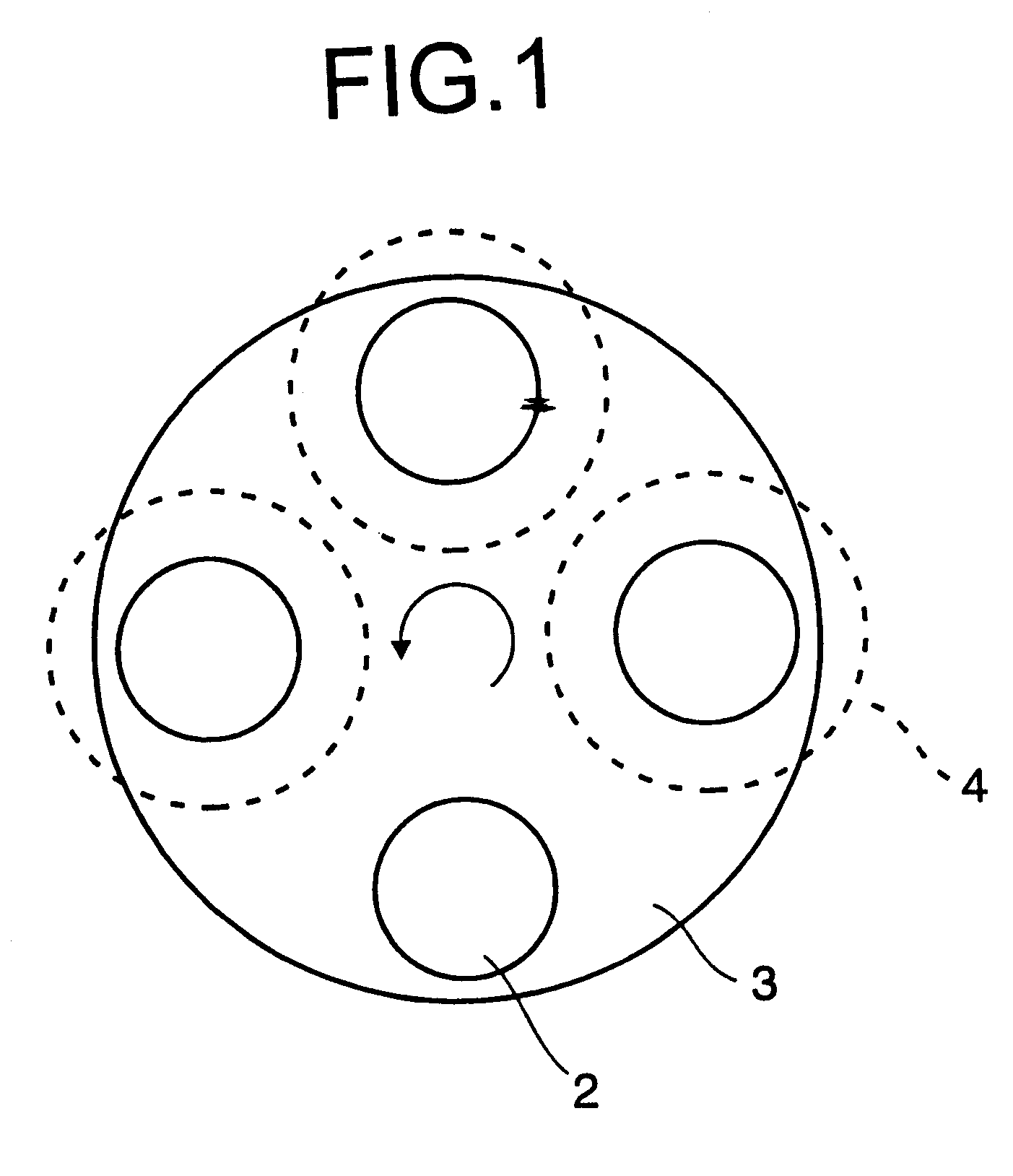Optical recording medium and method for making the same
a technology of optical recording medium and optical recording medium, which is applied in the direction of photomechanical equipment, instruments, transportation and packaging, etc., can solve the problems of long time, low productivity, and the rejection of inexpensive resin substrates for heating the overall medium
- Summary
- Abstract
- Description
- Claims
- Application Information
AI Technical Summary
Problems solved by technology
Method used
Image
Examples
example 1-1
An optical recording disc was prepared by injection molding polycarbonate into a disc shaped substrate having a diameter of 120 mm and a thickness of 0.6 mm. A groove was formed in one major surface of the substrate simultaneous with injection molding. On the grooved surface of the substrate, there were formed a lower dielectric layer, a recording layer, an upper dielectric layer, a reflective layer, and a protective layer. Another substrate which is the same as the one as described above was further adhered to the protective layer to produce the optical recording disc sample.
The lower dielectric layer was formed by sputtering a target of ZnS and SiO.sub.2. The value of SiO.sub.2 / (ZnS+SiO.sub.2) was 20 mol %. The lower dielectric layer had a thickness of 85 nm.
The recording layer was formed by the third procedure of the procedures as described above. FIG. 1 is a plan view schematically showing the sputtering system used. This system has a disc-shaped carousel 3 which is capable of ...
examples 1-2
The procedure of Example 1-1 was repeated except that the rotation speed of the carousel in the formation of the recording layer was set at 6 rpm so that the each disc passes below each target for 3 times. The thus produced sample was evaluated as in the case of Example 1-1. The results are shown in Table 2.
examples 1-3
The procedure of Example 1-1 was repeated except that the rotation speed of the carousel in the formation of the recording layer was set at 4 rpm so that the each disc passes below each target twice. The thus produced sample was evaluated as in the case of Example 1-1. The results are shown in Table 2.
PUM
| Property | Measurement | Unit |
|---|---|---|
| thickness | aaaaa | aaaaa |
| crystal grain size | aaaaa | aaaaa |
| thickness | aaaaa | aaaaa |
Abstract
Description
Claims
Application Information
 Login to View More
Login to View More - R&D
- Intellectual Property
- Life Sciences
- Materials
- Tech Scout
- Unparalleled Data Quality
- Higher Quality Content
- 60% Fewer Hallucinations
Browse by: Latest US Patents, China's latest patents, Technical Efficacy Thesaurus, Application Domain, Technology Topic, Popular Technical Reports.
© 2025 PatSnap. All rights reserved.Legal|Privacy policy|Modern Slavery Act Transparency Statement|Sitemap|About US| Contact US: help@patsnap.com


